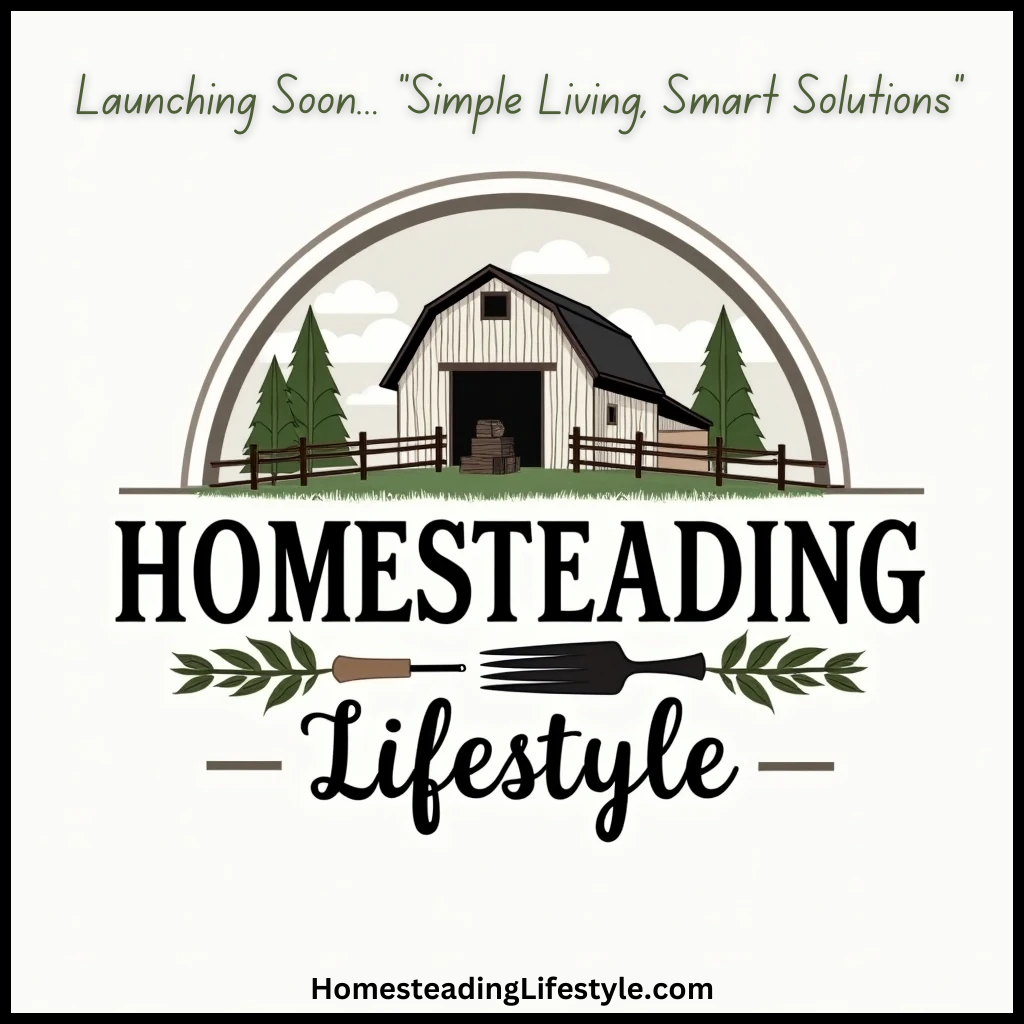Are you dreaming of embracing a simpler, more fulfilling lifestyle? In 2025, more people than ever are turning to simple life homesteading as a way to reconnect with nature, gain independence, and live sustainably. Whether you’re just starting out or looking to refine your existing homestead, these 10 proven tips will help you succeed in creating a self-sufficient and joyful homestead journey. Letâs explore practical strategies that make local food production, sustainable living, and personal fulfillment achievable for everyone interested in the simple life homesteading movement.
Table of Contents
- Start Small and Scale Gradually
- Focus on Sustainable Gardening
- Raise Livestock Responsibly
- Implement Water Conservation Techniques
- Utilize Renewable Energy Sources
- Practice Food Preservation Methods
- Build a Self-Sufficient Pantry
- Learn Basic Homesteading Skills
- Join Homesteading Communities
- Embrace Mindful Living and Minimalism
1. Start Small and Scale Gradually
Why Beginning with Manageable Steps Matters
Embarking on your simple life homesteading journey can feel overwhelming. That’s why starting small is crucial. Focus on one or two projects at a time, like a vegetable garden or a few chickens. Small successes build confidence and help you learn practical skills without becoming discouraged. Remember, homesteading is a marathon, not a sprint, especially in 2025 when sustainable growth is a priority.
Many successful homesteaders began with just a backyard garden or a few bees. As you gain experience and resources, you can expand gradually. This approach reduces financial strain and allows you to adapt techniques tailored to your specific environment. Small-scale efforts often lead to the most sustainable, long-term results in simple life homesteading.
Tip: Create a weekly plan focusing on one new project at a timeâwhether planting herbs or compostingâto steadily progress without burnout.
2. Focus on Sustainable Gardening
Sustainable gardening is the backbone of simple life homesteading in 2025. Employ methods like crop rotation, composting, and native plant cultivation to create a resilient garden. These practices reduce reliance on chemical inputs and promote soil health, making your homestead more eco-friendly.
Consider investing in permaculture principles, which aim to mimic natural ecosystems. For example, planting diverse crops in companion groups can naturally deter pests and improve yields. By prioritizing composting and rainwater harvesting, you reduce waste and conserve vital resources.
Data shows that sustainable gardening techniques can increase soil fertility by up to 30% within a few seasons, a significant boost for homesteaders aiming for high-yield, low-impact food production.
3. Raise Livestock Responsibly
Selecting the Right Animals for Your Homestead
Choosing the right livestock depends on your space, climate, and goals. Chickens, goats, and rabbits are popular options for small-scale homesteaders. In 2025, ethical and responsible animal husbandry is more important than ever, ensuring animals are well-cared-for and land is preserved.
Start with a small flock of chickens to learn about daily care, nutrition, and predator protection. As your experience grows, you can consider adding more animals like ducks for pest control or goats for milk. Responsible homesteading emphasizes humane treatment and sustainable management practices.
Tip: Always research local regulations and humane practices when raising livestock, ensuring your homestead remains compliant and ethical.
4. Implement Water Conservation Techniques
Water management is vital in the simple life homesteading lifestyle, especially as climate patterns evolve in 2025. Techniques like rainwater harvesting, drip irrigation, and mulching help conserve this precious resource.
Rainwater collection systems are an excellent investment, capturing free water that can be stored for dry seasons. Mulching around plants reduces evaporation and maintains soil moisture, decreasing your overall water needs. These methods not only save money but also promote a more sustainable homestead.
Did you know? Efficient water use can reduce household water consumption by up to 50%, which is a game-changer in dry or drought-prone areas.
5. Utilize Renewable Energy Sources
Solar Power for Homesteading in 2025
Renewable energy, especially solar power, is transforming how homesteaders operate in 2025. Installing solar panels can significantly reduce energy bills and your carbon footprint. Many modern systems are more affordable and efficient than ever before, making them accessible to the average homesteader.
Off-grid solar systems enable complete independence from utility companies, ideal for remote homesteads. With advancements in battery technology, you can store surplus energy for cloudy days or nightly use. Solar energy can power everything from water pumps to lights, maintaining a simple yet connected lifestyle.
Actionable Tip: Evaluate your energy needs and invest in scalable solar solutions that grow with your homestead’s requirements.
6. Practice Food Preservation Methods
Preserving food is essential to ensure a steady supply of fresh produce through the seasons. Techniques like canning, freezing, drying, and fermenting help your homestead’s food storage become more resilient and self-sufficient.
In 2025, innovations in dehydration technology and natural fermentation are making food preservation more accessible and nutritious. Learning these skills not only reduces waste but also creates a pantry stocked with healthy, homemade food.
Pro Tip: Label your preserved foods with date and contents to keep organized and optimize your harvest.
7. Build a Self-Sufficient Pantry
Stocking Essential pantry staples
A well-stocked pantry is a cornerstone of simple life homesteading. Focus on storing grains, legumes, canned goods, and preserved foods to reduce dependence on grocery stores. Growing your staples like wheat, corn, or beans can contribute to long-term food security.
Investing in proper storage equipment such as root cellars or airtight containers extends the shelf life of your harvest. Diversify your pantry to include mason jar preserved vegetables, homemade sauces, and fermented foods, which add flavor and nutritional value.
Takeaway: Aim to have at least three months’ worth of essential foods stored for emergencies and seasonal fluctuations.
8. Learn Basic Homesteading Skills
Essential Skills to Thrive
Mastering fundamental skills like gardening, animal care, woodworking, and food preservation can make your homesteading experience more successful. These skills are invaluable in 2025 when self-sufficiency is more appreciated than ever.
Consider enrolling in local workshops or online courses to build your knowledge base. Practicing basic carpentry enables you to repair or build structures cost-effectively, while knowing how to cultivate heirloom seeds ensures biodiversity and resilience.
Remember, skills like composting and pest management are critical in maintaining a healthy and productive homestead environment.
9. Join Homesteading Communities
Benefits of Community Support and Knowledge Sharing
Connecting with fellow homesteaders provides moral support, knowledge, and resource sharingâkey components of success in 2025. Whether through local groups, online forums, or social media, these communities can offer practical advice and encouragement.
Joining a community helps you stay updated on new trends, resources, and regulations impacting your homestead. Collaborative efforts like seed swaps, tool sharing, or cooperatives reduce costs and foster a sense of belonging.
Remember, many homesteaders find that shared experiences and collective knowledge make the journey more enjoyable and less lonely.
10. Embrace Mindful Living and Minimalism
Living Intentionally for a Fulfilled Homestead Life
Finally, adopting a mindset of mindfulness and minimalism enriches your simple life homesteading experience. Focus on quality over quantity, reducing unnecessary possessions, and prioritizing meaningful activities.
This lifestyle shift allows you to slow down, reduce stress, and enjoy the process of creating a sustainable homestead. It also aligns perfectly with the principles of environmentally friendly living in 2025, reducing waste and conserving resources.
Tip: Regularly declutter and evaluate your homestead routines to maintain a focus on what truly adds value to your life.
Conclusion
As we look toward 2025, embracing simple life homesteading becomes not only a personal journey but a movement towards sustainability, independence, and mindfulness. The 10 tips outlined above provide a practical roadmap for creating a resilient, efficient, and joyful homestead. Whether you’re starting small or expanding your efforts, these strategies will help you thrive in the evolving landscape of homesteading. Remember, simplicity is about making meaningful choices that support a healthier planet and happier lifeâso start today and enjoy the rewarding process of homesteading in 2025!
FAQs
- What is simple life homesteading?
- Simple life homesteading is a lifestyle focused on self-sufficiency, sustainable living, and minimalism, where individuals or families grow their own food, raise animals responsibly, and reduce reliance on modern conveniences to live more intentionally.
- How can I start my simple life homesteading journey?
- Begin by setting small, achievable goals such as establishing a vegetable garden or raising a few chickens. Educate yourself on sustainable practices and join local or online homestead communities for support and advice.
- What are the most affordable ways to adopt sustainable practices in 2025?
- Implement rainwater harvesting, composting, and growing native plants. Start small with a kitchen garden or small livestock, and gradually expand as you learn and save. Investing in energy-efficient solutions can also reduce long-term costs.
- Why is responsible livestock management important for simple life homesteading?
- Responsible management ensures animal welfare, minimizes environmental impact, and maintains land health. Ethical practices contribute to sustainable homesteading and often lead to better yields and healthier animals.






